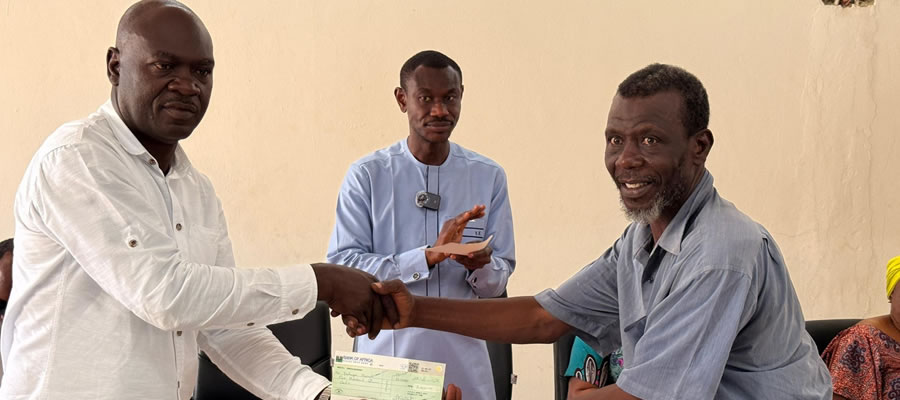

Access to Agricultural lands
Farmers acquire land from land owners by annual cash renting or its equivalent in kind after harvesting in the cropping year. Majority of the farmers feel comfortable with the tenancy agreement with their land owners. The farm holdings of farmers are generally small as a result of the small land holdings of the several family heads from whom they access the land.
Land acquisition procedures for Agriculture
Farmers identify lands they are interested in, followed by cordial negotiation and agreement with land owners either verbally or documented.
Land Use
Lands for agricultural purposes have now been converted for residential accommodation due to urbanization and population increase. Land available for agricultural use is less than 1% of the total land area. Farmers now cultivate on building plots which have not yet been developed..
Major Crops Grown
The crops grown include vegetables; cassava and maize. The vegetable farmers concentrate on spring onion, Ayoyo, Alleefu (Amaranthos), suuley, lettuce, cabbages, carrots and sweet pepper.
Farming System:
Vegetable farmers practice the intensive system of production due to limited land. Backyard farming is a common practice within the municipality.
Livestock production:
This is another major activity which generates income for the farmers. The farmers rear cattle, pigs, sheep and goats. Most of them concentrate on fattening of cattle for the Kumasi cattle market and the Kumasi abattoir. Sheep and goats are reared as backyard activity. It is estimated that about 1200 livestock farmers operate within the municipality. Poultry production is very low in the municipality but there are few farms in the municipality including Alhaji Anarfo Sakpare farms, with a stock population of 15,000 birds and 23 cattle located at Sawaba and Akologo Prosper Tambire farms-31 pigs located at Kontonpo.
Fish Farming is however, not a key activity within the municipality. Only 1 fish farm or fish pond is located within the municipality.
Tree Planting:
Tree planting is not a major activity in the municipality but however there are few teak plantations which were established by forest research institute in collaboration with some farmers at Parkoso. These plantations serve as forest reserve within the municipality.
Agricultural Extension Services are provided by the MOFA department of Agriculture within the municipality. The municipality has total staff strength of eight with two Agricultural extension agents (AEAS), 4 Municipal Agricultural officers including a veterinary officer, Municipal Director and one Administrative staff.
The municipality is divided into 4 operational areas, each comprising four communities. Each Operational Area is to be manned by an Agricultural Extension agent.
The two Agricultural Extension agents operating within the municipality are working with one thousand, five hundred and forty (1540) farmers. These are supported by four municipal agricultural and veterinary officers who offer technical backstopping to the agricultural Extension agents and farmers. The current Agricultural Extension farmer ratio in the municipality is 1:770.
The municipality employs two main methods of extension delivery in disseminating improved technological information to farmers. These are farm and home visits, farmer to farmer extension; and, group methods like demonstrations and campaigns.
Food Security in the Municipality
Food security in the Municipality is to an extent moderate. Access to agricultural lands, land acquisition, land use, major crops grown on the lands among others were considered in accessing food security in the Municipality.
Date Created : 11/23/2017 4:55:56 AM












 facebook
facebook
 twitter
twitter
 Youtube
Youtube
 +233 593 831 280
+233 593 831 280 0800 430 430
0800 430 430 GPS: GE-231-4383
GPS: GE-231-4383 info@ghanadistricts.com
info@ghanadistricts.com Box GP1044, Accra, Ghana
Box GP1044, Accra, Ghana